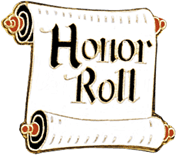|
NGSS Performance |
Disciplinary Core Idea |
Alaska Seas and Watersheds Unit(s) |
Activity Type |
Description |
|
Cycles of matter and energy in ecosystems Engineering design: defining the problem and constraints |
Pollutants – Sink, Swim, Float (Link) |
Lab |
Students will . . . |
|
|
Engineering design: Newton’s 3rd Law Forces and Motion |
Drones – Tool for Exploring the Ocean and Beyond! (Link) Submersibles: Doing Science Where You Cannot See (Link) |
Engineering design Technology applications |
Students will . . . Students will . . . |
|
|
Special Collection of resources for teaching about ocean acidification in Alaska waters (Link to OA Network webpage) |
||||
Links to other NGSS-aligned lesson plans and units specific to Alaska marine and watershed ecosystems:
e.g., Gulf Watch Alaska Virtual Field Trips




 The Alaska Seas and Watersheds curriculum was designed to be inquiry based. Each unit includes activities that allow students to be actively involved in their own learning to construct meaning and understanding, as opposed to all knowledge and content being conveyed by the teacher. We have included the use of Science notebooks throughout the units to encourage teachers to promote inquiry and allow students to learn to write about science, articulate their thoughts, feelings, questions and ideas, and to begin to think like scientists.
The Alaska Seas and Watersheds curriculum was designed to be inquiry based. Each unit includes activities that allow students to be actively involved in their own learning to construct meaning and understanding, as opposed to all knowledge and content being conveyed by the teacher. We have included the use of Science notebooks throughout the units to encourage teachers to promote inquiry and allow students to learn to write about science, articulate their thoughts, feelings, questions and ideas, and to begin to think like scientists. 




